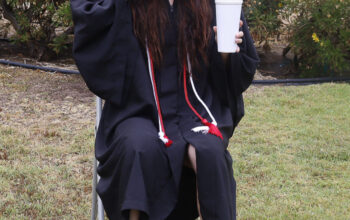Even though Proposition 30 stopped some of the bleeding last Nov., federal sequestration stands to take $67 million more from Calif.’s budget for special education.
In light of the recent budget cuts, Pierce College’s ten-year-old High School Outreach and Recruitment program’s team of 12 student workers was downsized to one staff member.
The Roundup understands the Los Angeles Community College District had the rug pulled from under it financially, and we feel showing potential what we have to offer would help Pierce in these times.
There’s one group in the community that needs us more than anyone else: high school students.
High school students are primarily the ones coming into Pierce and, according to a fall 2011 survey, 26 percent of Pierce students are under the age of 20.
Typically, right after graduating high school, new college students have some common questions like, “What classes do I need?” and, “Where should I transfer?”
Many high school students don’t get the guidance they need, and some don’t know what they want to study or what career they want to prepare for.
At about 18 years old, this is understandable.
A majority of high school students that go straight into a four-year colleges switch their majors more than once, or financial struggles keep them from finishing, leaving them academically stranded.
A recent survey conducted by classesandcareers.com revealed that the average undergraduate dropout rate at four-year colleges for freshmen is roughly 20 percent, and it’s rising.
This is where Pierce can help. Even though Pierce does offer classes at some high schools, more could be done.
The program could consider making presentations at local high schools, where student volunteers from Pierce could sit down with high school students and discuss what community colleges like Pierce could provide.
We have the resources. Pierce has bright, capable students who are familiar with the community college system and who can share their trials of re-evaluating important goals.
By facilitating discussion among Pierce and high-school students, we could widen the bridge and ease students’ transition into college. We could even create some bonds that could help students throughout their college career.
Community college is a beneficial in-between stage that could help any student, even if they already have a plan laid out.
It offers more than just an opportunity to save money, but it could give high school students an encouraging and positive impression of community colleges.
If Pierce focuses on helping high school students successfully transition into college, we would be helping Pierce get through these rough times, too.


